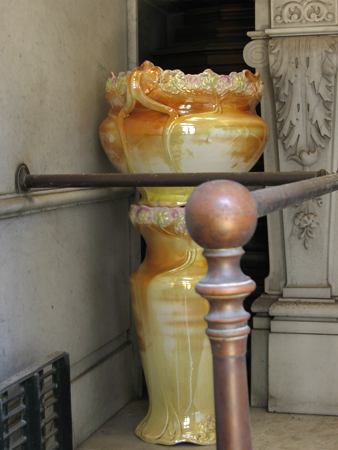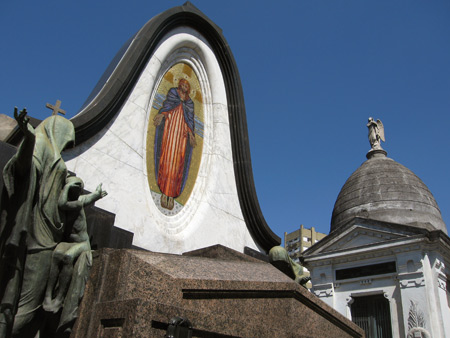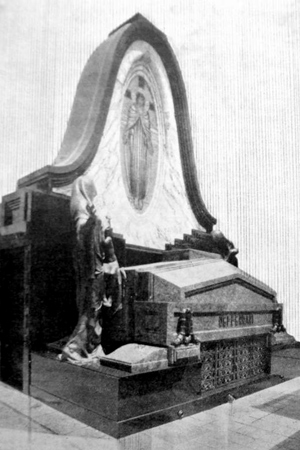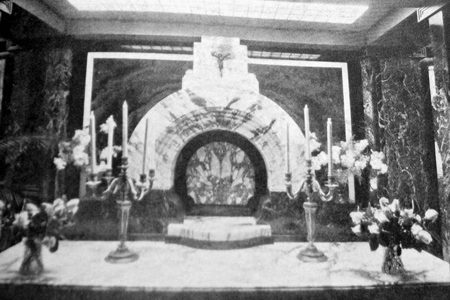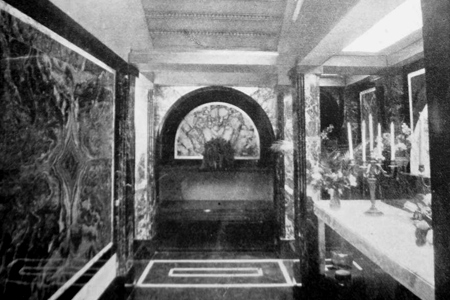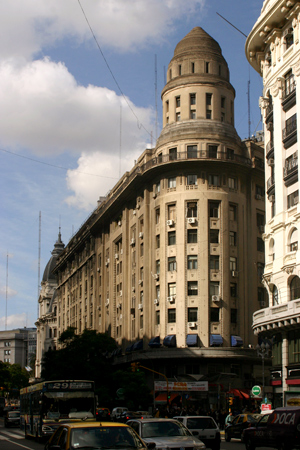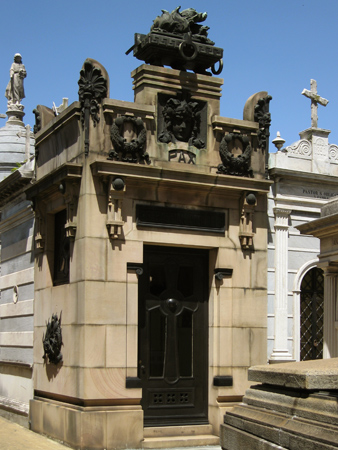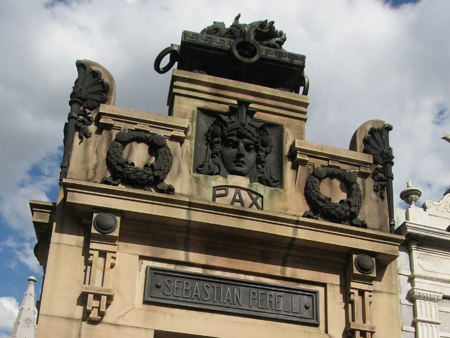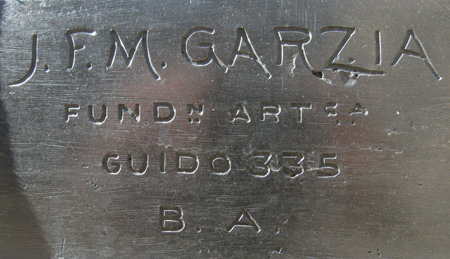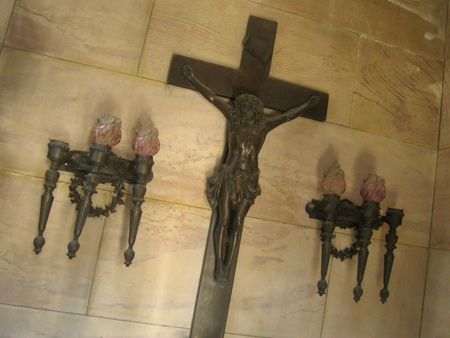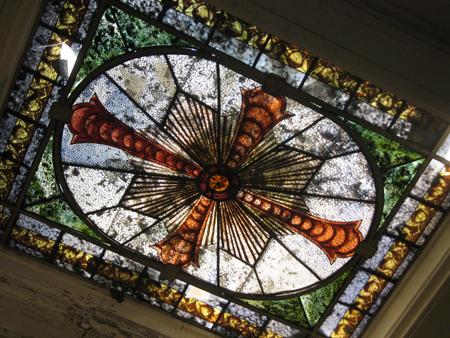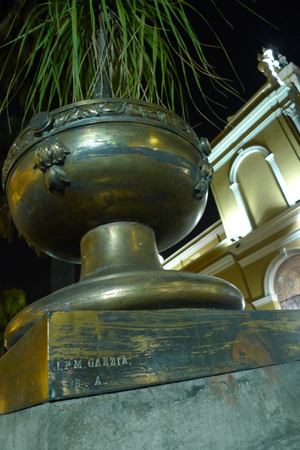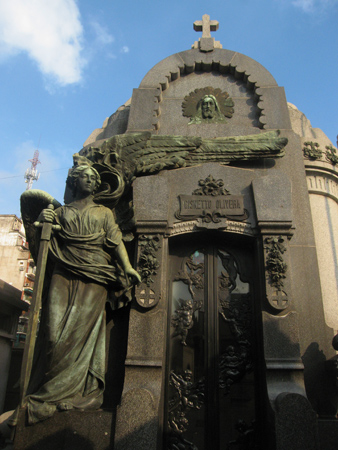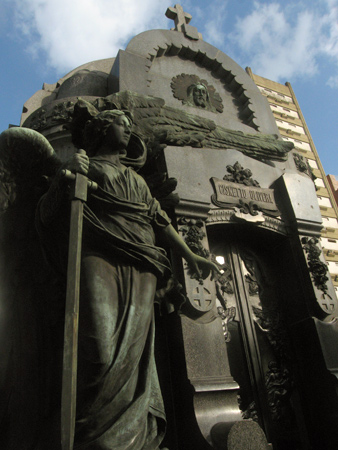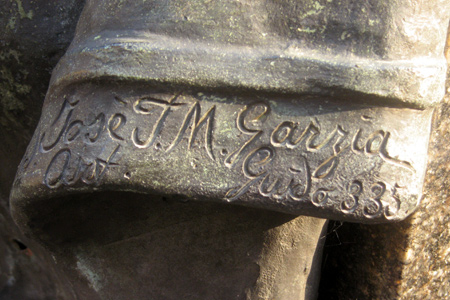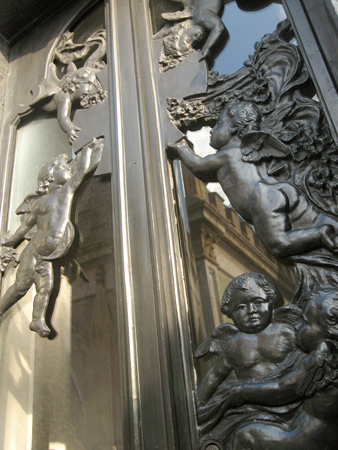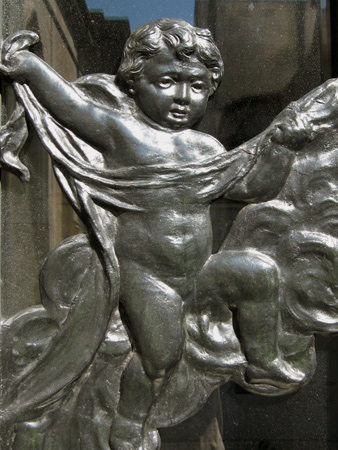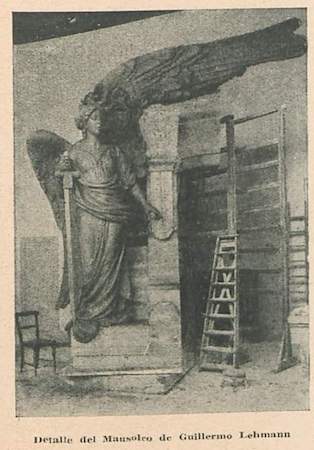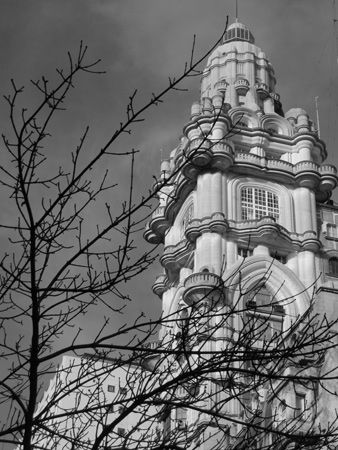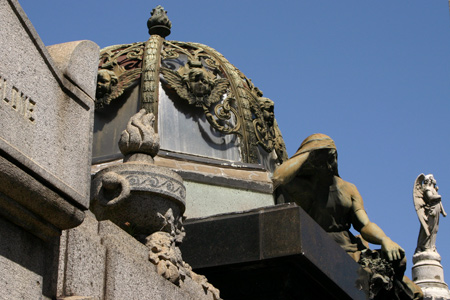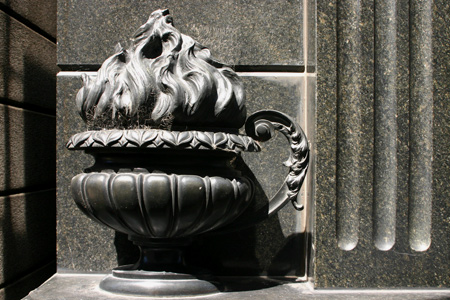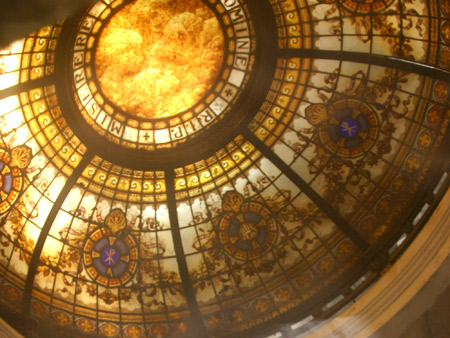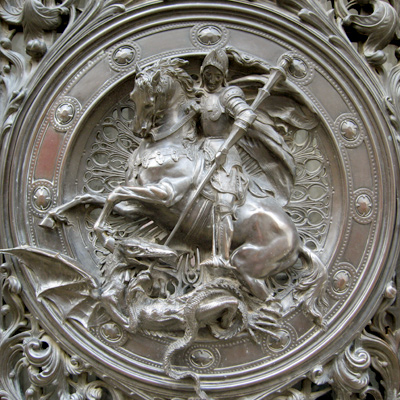Ginormous. No other word can describe the guardian angel watching over the entrance of the Cisnetto Olivera tomb. Easily standing three meters tall, the statue’s height is even more imposing viewed from the narrow walkways of the cemetery:
José F.M. Garzia’s signature is equally large, but L. Fontana & Scarabelli are listed as the sculptors on the right-hand side of the mausoleum:
Cherubs floating in the heavens decorate the door:
Carlos Cisnetto Olivera graduated from the University of Buenos Aires as one of the first civil engineers.
Update (02 Oct 2011): After a recent trip to San Miguel de Tucumán, I discovered that the bronze urns & light fixtures surrounding the Casa de Gobierno were made by José F.M. Garzia as well:
Update (27 Aug 2022): According to comments left in 2013, Garzia was only the smelter. While we’ve not been able to confirm, the Centro de Estudios e Investigaciones Históricas de Rafaela —a small town in the province of Santa Fe— recently published the following photos they claim to be of a mausoleum in Recoleta for Guillermo Lehmann in 1912:
They also state that the sculpture was designed by Luis Fontana & Juan Scarabelli from the city of Rosario… but will not name the source. As Marcelo said, “It’s not like this is a matter of national security.” 😉 Lehmann founded Rafaela in 1881 & was found dead from a gunshot wound to the head in a hotel in Buenos Aires in 1886… apparently suicide. His widow wanted Lehmann to be buried in Recoleta Cemetery, so she purchased a plot & had this mausoleum built. Later his remains would be transferred to a family tomb in the city of Esperanza & then to two locations in Rafaela.
A couple of things still don’t fit. Cisnetto Olivera died in 1918, so was Lehmann only in Recoleta for six years before moving? Seems a little ridiculous considering what this mausoleum must have cost. Also, if you compare the black & white photo to the current statue, they aren’t the same. Almost but not quite. For example, the drape of the dress around the tip of the sword is different. So are the final feathers on the top wing. The face doesn’t look the same either. Who made the final changes? When did Lehmann leave? Marcelo is working on it…
Update (08 Mar 2025): The plot thickens… As cemetery researcher Graciela Blanco stated recently in a Facebook group: “Efectivamente el ingeniero civil (uno de los llamados doce apóstoles) fue Carlos Olivera Piriz y no Cisnetto Olivera. Por otra parte, las referencias a este apellido compuesto son escasas e imprecisas.” And we agree that it’s still possible the engineer is buried here, but how does the Cisnetto family name enter into the story?
